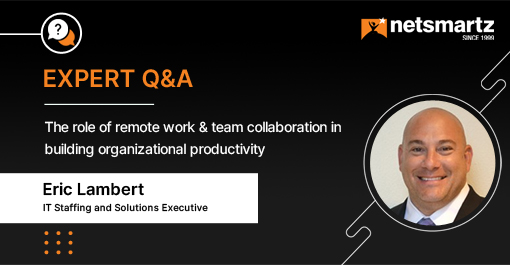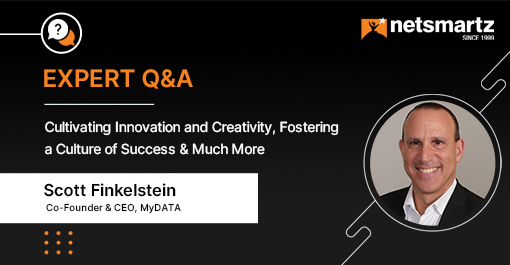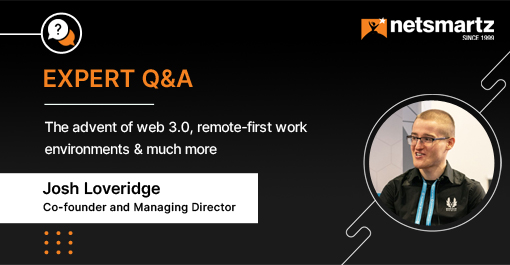Strategies For Managing Supply Chain Management & Much More

Optimizing the supply chain is essential for new companies aiming to reduce costs while maintaining product quality and customer satisfaction, from demand forecasting to leveraging AI technologies, multiple tools, and methodologies that can empower new businesses to thrive in the complex world of supply chain management.
That’s why we got in touch with Josh Burwick to understand the nuances of supply chain management amid the surge of AI.
Keep on reading to learn his insights!
Want to contribute to our expert insights?
Contact Us About Josh Burwick
About Josh Burwick
Josh serves as the Co-Founder and CEO of CaratX, blending his lifelong passion for technology and entrepreneurship. His forte lies in propelling companies toward the coveted $1 million+ revenue milestone. His journey encompasses various facets, from navigating the intricate world of diamonds, gems, and jewelry to indulging his inner automotive aficionado. He brings a wealth of experience as a supply chain leader, adept in sales, support, and operations. In addition, he plays an advisory role in the realm of cybersecurity.
1. Can you share insights on how new companies can optimize their supply chain to reduce costs while maintaining product quality and customer satisfaction?
I’d recommend the following strategies for reducing costs and optimizing one’s supply chain:- Demand Forecasting: Accurate demand forecasting using historical data and predictive analytics helps in aligning supply with actual demand, reducing overproduction or stockouts. You need supply chain technology partners familiar with big data to do this successfully.
- Supplier Collaboration: Building strong relationships with reliable suppliers can lead to better terms, reduced lead times, and cost savings through bulk purchasing.
- Inventory Management: Implement just-in-time (JIT) inventory strategies to minimize carrying costs while ensuring product availability.
- Technology Integration: Employ modern supply chain management software, e-commerce technology, and automation to streamline processes, monitor inventory, enhance reporting, and reduce errors.
2. What are some common challenges that new companies may face when managing their supply chains, and what strategies can they employ to overcome them?
- Limited Resources: New companies often have limited resources. They can overcome this challenge by focusing on key suppliers, utilizing cloud-based supply chain tools, and seeking financing options.
- Unpredictable Demand: To tackle unpredictable demand, companies can use flexible manufacturing processes and adaptive supply chain strategies while employing the latest in e-commerce and supply chain technology partners. Companies need partners that understand their growth challenges within the supply chain.
- Supplier Reliability: Vet suppliers thoroughly and establish backup suppliers to mitigate risks.
- Scaling Up: Plan for scalability by designing a supply chain that can adapt as the business grows.
3. How can new businesses strike a balance between maintaining inventory levels and avoiding excess stock that ties up capital? What tools or methodologies do you recommend for this?
Quite the challenge, indeed. However, balancing inventory levels and capital management doesn’t have to be as painful. In the diamond world, inventory moves rapidly and changes daily. Here are some strategies you can use to reduce excess capital deployment:- Employ an Economic Order Quantity (EOQ) model or similar to determine optimal order quantities and reorder points.
- Use software e-commerce tools tailored for your business to categorize products by importance and manage them accordingly. Finding the right technology partner is key in today’s business landscape.
- Utilize advanced inventory management software to track and analyze stock levels in real time and forecast demand for future purchases.
4. How do you believe AI technologies, such as machine learning and predictive analytics, can enhance demand forecasting for new companies trying to manage their supply chains more effectively?
I think AI will have massive impacts on the global supply chain. Every key player at every level and business segment needs to start preparing for the rapid change ahead. Here are a few things to consider as AI is shaping major supply chains across the globe:- Machine Learning: AI can analyze vast datasets to identify patterns and trends in demand. It can continuously learn and adapt to changing market conditions.
- Predictive Analytics: Predictive models can provide more accurate demand forecasts, enabling companies to optimize inventory levels and reduce carrying costs.
- Data Integration: AI technologies can integrate data from various sources, such as sales, marketing, and external factors, to provide a holistic view of demand drivers.
- Real-time Updates: AI can provide real-time updates on demand fluctuations, allowing companies to adjust their supply chain in response.
 Wrapping Up
Wrapping Up
Challenges and opportunities mark the journey of optimizing the supply chain for new companies. By embracing demand forecasting, nurturing supplier relationships, and leveraging cutting-edge technologies like AI and predictive analytics, businesses can streamline operations, reduce costs, and deliver top-notch products or services. The supply chain is the backbone of any organization, and with the right strategies in place, new companies can ensure it remain robust, efficient, and adaptable to future growth.
Overall, this Expert Q&A was refreshing. As much as we enjoyed reading it, we hope you will find it insightful as well.

Are You An Influencer?
Make Your Mark as a Thought Leader
We invite industry influencers to participate in our Q&A panel, offering the audience valuable insight into cutting-edge technology trends, platforms, and more.


























































